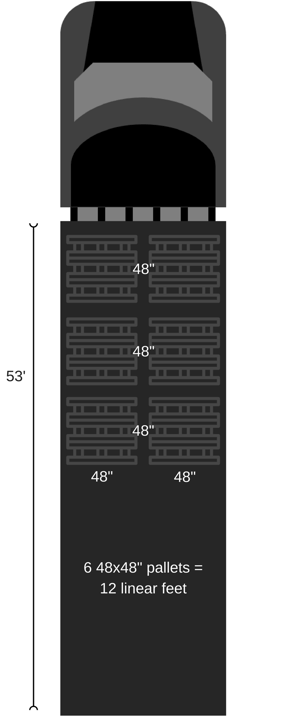REDWOOD LOGIN
Redwood PortalLTL
SCS
SCS Support
Rockfarm
 If you’ve recently reviewed an LTL shipping invoice, and noticed a surcharge classified as “minimum cubic capacity rule” – don’t worry; you’re not alone. While shipping less than truckload (LTL) is convenient and can save money under certain situations, there are some rules that must be complied with to ensure accurate billing. One of them is called the cubic capacity rule, and quite frankly, it’s one of the most difficult rules for a shipper to grasp.
If you’ve recently reviewed an LTL shipping invoice, and noticed a surcharge classified as “minimum cubic capacity rule” – don’t worry; you’re not alone. While shipping less than truckload (LTL) is convenient and can save money under certain situations, there are some rules that must be complied with to ensure accurate billing. One of them is called the cubic capacity rule, and quite frankly, it’s one of the most difficult rules for a shipper to grasp.
In order to ensure you clearly understand the cubic capacity rule, we’ve listed some facts about this rule, along with a few tips on how to avoid being hit with these ‘mysterious’ and costly charges.
In order to operate efficiently, LTL carriers impose a minimum cubic capacity rule. These rules are used to combat those light and fluffy shipments that take up a ton of physical space, but not much weight. In most instances, the LTL carrier stipulates that if a shipment fills more than 750-cubic feet AND the shipment maintains a density of less than six-pounds per cubic foot; it’s not paying a fair share. This is generally referred to as the cubic capacity rule.
However, here is the trick – these standards are not universal. In fact, many carriers define their own specific cubic capacity rules. Some carriers utilize a threshold of 250 cubic feet with less than 3 pounds per cubic feet. The key item to remember is that the Cubic Capacity Rule is not set in stone. Always check with your carriers before setting up shipments to ensure you don’t fall victim to these charges.
So, now that we’ve outlined what the cubic capacity rule means, here are a few helpful hints to avoid those charges.
• Be careful how you measure: Once you’ve contacted your carrier and clarified the cubic capacity rules, you’ll want to make sure accurately measure your load. Along with clearly articulating the freight class, size and weight, the cubic feet measurements are also critical for correct pricing. Take time to measure the cubic feet by using the dependable height x width x length formula.
• Make sure your load is greater than the cubic capacity rules standard: There are several carriers who are strict followers with their cubic capacity rules, and others who are a bit more flexible. To completely avoid that ‘gray area’, make sure your shipment is greater than a cubic capacity rule.
• Be careful about exceeding the limitation on the bill of lading estimate: When you contact a carrier to receive an estimate for shipping, that information is documented on a Bill of Lading. A common area where some carriers can get ‘creative’ about ‘adjusting’ their cubic capacity rules. If the size of your freight is bigger than what has been documented on the BOL, you can be charged with a cubic capacity violation charge.
• Be aware of Extreme Length Fees: On the other side of the scale, the Extreme Length Fee is a charge that some carriers will implement if the shipment is longer than 12-linear feet. The bad news is that this charge is typically greater than the cubic capacity fee. If you’re in the sticky situation where your shipment is smaller than 750 cubic feet, and you’re going to be hit with that cubic capacity fee, make sure it’s less than 12-linear feet – so you don’t receive a double-dipped charge.
Finally, if you have a logistics program that often requires shipping items that are lightweight or less than 750-cubic feet or close to most carrier’s cubic capacity rule, working with an experienced 3PL can save you a ton of frustration. Experienced third-party logistics providers like LTX solutions can help you manage all aspects of your logistics program, including helping to negotiate reduced fees for those ‘close’ LTL shipments.